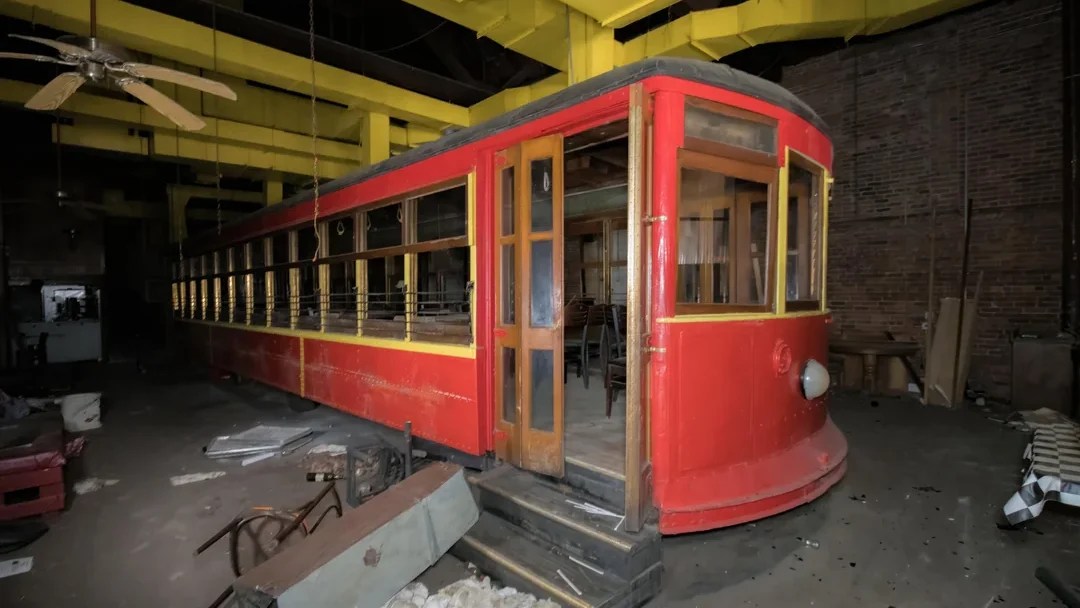COLUMBUS, Ohio (WCMH) – Ohio has launched a training technique for law enforcement officials, allowing them to practice reacting to different scenarios in what the attorney general is calling a “quantum leap” forward for police instruction.
Police officers across the state and country often need to make split-second decisions that could make the difference between life and death. Virtual reality goggles designed to immerse police in these high-stakes scenarios were dispersed by Attorney General Dave Yost in May and are now available to all law enforcement agencies in the state.
“You’re wearing some goggles, but it’s not like watching a screen because it’s 360 degrees,” Yost said. “When you turn your head, you see a different part of the room. It’s like actually being there.”
The training offers six scenarios, each lasting eight to 12 minutes, including mental health, domestic violence, school violence, the teen brain, suicide prevention, and irate families. Officers do not use their firearms during the VR training, Yost said.
“You’re reacting in real time with your adrenaline pumping, and you get the shortness of breath and the tunnel vision and all the reactions that you actually have on the street,” Yost said. “The only thing is, it’s not real. So if you make a mistake during your training, nobody gets hurt.”
The officer enters the situation with little information, mimicking what they would have known from a 911 call. Trainees use the headsets to view and experience different outcomes for each scenario, showcasing the best and worst ways to handle the situation.
“For example, the PTSD scenario, there’s two tracks in it,” Yost said. “The first officer goes in trying to control the situation and a little bit aggressively, and that ends badly. A second officer walks through it and he does some very wise tactical things that ends up deescalating the situation. The sheriff comes on and dissects both approaches, what worked, what didn’t and why.”
One component of the VR training is the use of graphics displayed on the screen to illustrate the speaker’s emotional states. In one scenario, a young woman is contemplating suicide and color-coded graphics on the side of the screen appear as she is talking, labeling the emotions she’s expressing as she speaks, such as guilt, sadness or hope.
One hundred and sixty headsets are available to all 900 of Ohio’s law enforcement agencies at six regional training centers throughout the state, and the goggles can be easily transported between facilities. An entire department can go through the training in a day, Yost said.
The program took about two years to develop and was piloted last year. Yost began exploring the idea of using VR headsets to train law enforcement in the state during the COVID-19 pandemic.
“When COVID hit, the casino revenue stream stopped because nobody was going to casinos. That’s how we fund police training in Ohio – it’s not nearly enough money,” Yost said. “It dried up and that gave us the opportunity to reimagine ‘how do we deliver training in Ohio.’”
The scenarios were filmed using a 360-degree camera with help from Ohio University’s School of Emerging Communication Technologies. The Ohio University Police Department, Athens Police Department, Athens County Sheriff’s Office, and Columbus Division of Police also assisted with filming and developing the scenarios.
“You feel like you’re the third officer there on scene,” said Columbus Police Lt. Amber Rich. “You’re observing each officer, you’re analyzing the scene, each person, each subject and thinking about ‘I really like that technique, I like how he used those words’ or worded things a certain way and then you also sit there and think about what you would do differently.”
A study by PwC claims 40% of VR learners are more confident in applying what they’ve been taught and 150% more engaged during learning. Yost said plans to get more headsets in the future.
“I think this is going to be a real fixture in police training,” Yost said. “The officers that have been through this, both in the pilot and since we launched it during police week a few weeks ago, have been incredibly enthusiastic about it. Much better, they say, than sitting through a lecture or watching a video screen.”
Yost said he would like to expand the training in the future by getting more goggles – new scenarios for officers to experience are already in the works.














